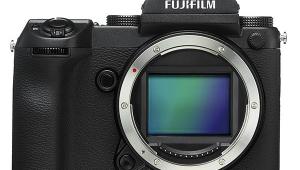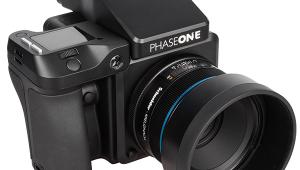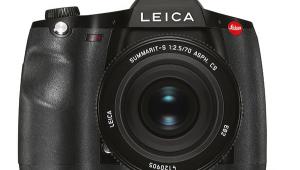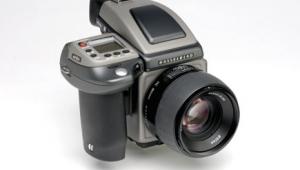Great review! Wish I could afford one lol
Hasselblad X1D Medium Format Camera Review
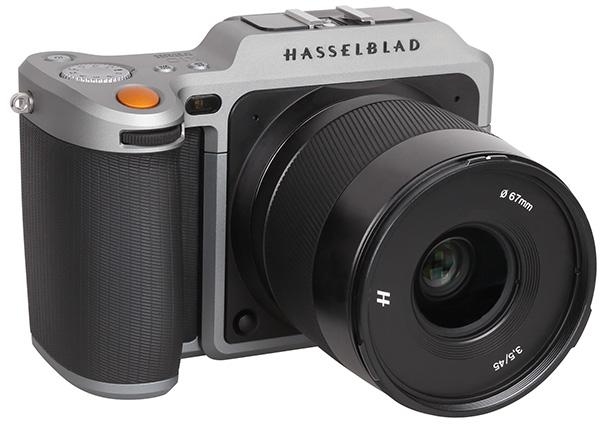
(Editor’s Note: Lab Review lab tests and comments are supplied by BetterNet, Shutterbug’s TIPA-affiliated testing lab and edited by George Schaub. TIPA is a worldwide association of photo and imaging magazines.)
The new Hasselblad X1D is a very compact medium format system, thanks in part to its use of an electronic viewfinder system rather than the usual mirror box design. Based on the same sensor as the Hasselblad H5/6D-50c, the camera has a 43.8x32.9mm CMOS sensor with 50MP resolution (8272x6200 pixels).
It should be noted that the new design of the Hasselblad X1D requires new lenses: as of this test there are two new Hasselblad XCD leaf (shutter in lens) lenses, which allow shutter speeds up to 1/2000 second. They are the XCD 45mm f/3.5 and the XCD 90mm f/3.2. The 45mm is equivalent to a 35mm focal length on full-frame DSLRs and the 90mm is a 71mm equivalent. Both lenses were used for the test, but most (technical test) images were done with the 45mm.
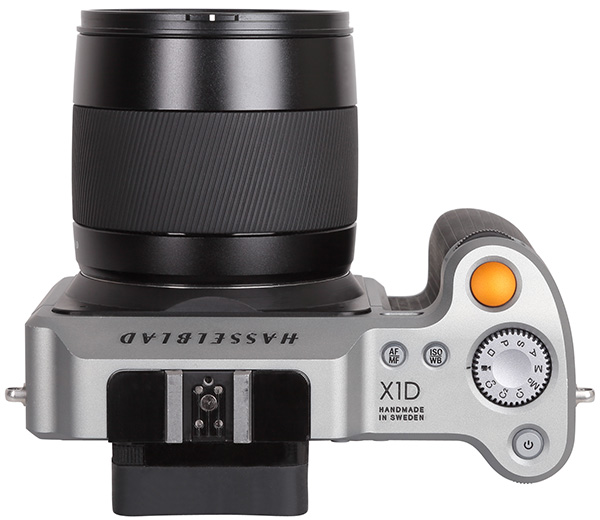
Hasselblad has announced a third lens, the XCD 30mm f/3.5, which will be the first wide-angle lens for the X1D and is a focal length equivalent of 24mm. As we went to press, a fourth lens was announced, the XCD 120mm f/3.5 Macro, with a focal length equivalent of 95mm. In addition, Hasselblad will offer an XH Lens Adapter for H system lenses. In its first version the adapter will allow manual focusing; autofocus will be supported in a later version of this adapter.

Features, Build & Handling
The Hasselblad X1D has a stylish body with a surprisingly low number of function elements. It offers a touchscreen on the back, which is seamlessly integrated into the handling and operation of the camera.
A mode dial on the top allows access to standard exposure modes like P, S, A, and M. This dial is seamlessly integrated into the body, so the photographer has to press it to lift it up and change the settings: pressing it again will lower it back into its standard position. Settings of this dial are also shown via a “virtual” mode dial on the LCD screen.

The right button on the top (near the mode dial and shutter release button) has two functions. By pressing it once the photographer can change ISO settings by using the parameter dial on the back or a slide menu on the touchscreen. Pressing this button again will switch into the white balance setup menu, which can be changed on the screen or with the parameter dial.
The Hasselblad X1D offers two parameter dials, one near the shutter button on the front and one on the back. These dials are used for commands because the camera doesn’t offer a standard cursor field. For example, to choose the desired AF area on the screen the photographer can use one dial for right/left commands and the other dial for up/down commands.
The camera offers an accessory shoe for external flash systems. The X1D is compatible with Nikon’s iTTL system, so it can use Nikon SB flash units with TTL metering. We used the accessory shoe for a wireless flash controller for the portrait test shot.

The X1D has a large and bright electronic viewfinder (2.36 million RGB dots) that displays a bright and large image. A magnifier function is available, which is very helpful for manual focusing, but a focus peaking function is missing. Hasselblad told us that this function would become available with a later firmware version of the camera. The camera offers Wi-Fi control by a smartphone via a free iOS app; an Android version is anticipated.
Working with the X1D is like shooting with a standard SLR system. Handling is easy, with only the speed of the camera being lower than a fast SLR or mirrorless camera. Start-up time is seven seconds (!), so you have to wait for the camera until it is ready for the first shot. Large JPEGs and Raw files are written to SD/SDHC/SDXC cards: the camera offers two card slots that can be used in parallel mode (JPEGs on card one, Raw images on card two) or simply as backups that switch to a second card when the first card is completely filled.

Due to the high sensor resolution the images are really large. Raw files will take 70 to 100MB per image. The X1D can record JPEGs at lower file sizes, but the current and tested version of the camera can only save 12MP JPEGs (as a kind of preview file). Hasselblad told us that a later firmware update would allow for JPEGs with full 50MP resolution.
The camera offers a fast USB 3.0 (Type-C) interface. A short USB C cable (about a foot) is supplied with the camera for fast data transfer if you connect the camera directly to a computer. Note: You will need a much longer cable if you plan to use the USB connection for tethered shooting with Hasselblad’s “Phocus” image recording and Raw converter software.

Comments on Image Quality
Color: Color errors are on a very low level. Saturation is slightly increased to 105.3 percent, which could be easily reduced when using the color-editing tools in Hasselblad’s Phocus. The X1D test Raw image was converted with standard settings. White balance settings are perfect; the gray patterns are perfectly located in the center of the test chart. The same perfect result applies to skin tones. Color differentiation is extremely high: all color intensities are clearly differentiated and have a very crisp look.
Sharpness: The Hasselblad X1D performed excellently in our resolution tests. The ISO 12.233 chart was reproduced with 6,020 of 6,200 lines per picture height, which means that the camera and its new lenses are able to convert nominal sensor resolution almost completely into visible image details. Very crisp detail reproduction and very high color differentiation result in an almost 3D look in detail-rich images.
Noise: Very high pixel density on the 50MP sensor causes a certain level of luminance noise even at ISO 100 settings (0.97 percent for ISO 100 speed). Note that the test images are based on a Raw file that was converted in Hasselblad’s Phocus software without any anti-noise filter settings. Standard cameras use anti-noise filtering for creating JPEG images even when shooting at low ISO speed modes.

The color noise level is very low in lower ISO speed settings between ISO 100 and ISO 1600 (nearly invisible). Noise artifacts become visible at ISO 3200 and are still acceptable at ISO 6400. In ISO 12,800 and especially in ISO 25,600 settings, the color noise artifacts become quite intense. This means you have to set up the anti-noise filter settings in Phocus to a very high level, which can cause a drastic drop in sharpness and fine detail reproduction. The camera isn’t ideal for low-light situations. It will deliver perfect images when the light allows ISO 100 to ISO 800 settings, and in some borderline cases ISO 3200.
Dynamic range is very high. Using standard Raw conversion settings in Phocus, the test images showed a maximum dynamic range of 12.8 f/stops and held this very high level for images taken with ISO 6400. Even at ISO 25,600 the test image had a dynamic range of 10 f/stops.
Comments on Video Functions
The Hasselblad X1D offers Full HD resolution of 1920x1080 pixels and standard frame rates up to 30 frames per second. Videos are recorded as MP4 files with H.264 compression (4:2:0, 8-bit), so video files of the X1D can be presented on any PC or video device (smartphone, smart TV) and edited in standard video-editing software without any problem. To start video recording the user has to switch the mode dial on the top to its “video camera” settings and press the shutter release button. The camera allows manual settings for video recording as well as manual focus. The focus magnifier function is very helpful, but a focus peaking function is missing (according to Hasselblad, focus peaking will be available with a later firmware upgrade). The camera offers manual exposure and ISO settings. An external microphone can be attached for better sound quality, which we recommend: the sound quality of the built-in mic is not that impressive.
Comments on Video Quality
The Hasselblad X1D reproduced the ISO 12.233 test chart with 986 of 1,080 lines per image height. This is an excellent result, but sharpness is a bit too high. Fine details cause clearly noticeable moiré effects, especially on hard contrast lines like the black-and-white pattern of our test chart; this is also noticeable in our sample test clips.

Color reproduction does not meet the level of the resolution result. The test chart was reproduced with a clearly visible shift of the white balance and an extreme shift of blue nuances. Noise test results, however, are excellent due to the “pixel binning effect” of the 2MP video image taken with a 50MP sensor. Luminance noise results are very low. Color noise becomes visible in the ISO 6400 to ISO 25,600 range. Dynamic range is quite low. The camera achieved a maximum of only 5.98 f/stops at ISO 100. The very hard contrast between very bright and very dark elements in the scene is noticeable in our test clips.
Scorecard
Pros
+ Very compact medium format camera
+ Easy handling due to stylish user interface and design
+ High-resolution results; fascinating image quality
Cons
- High price
- New lenses necessary (or usage of converter for H system lenses)
- LCD screen is fixed
The Hasselblad X1D (body only) has a list price of $8,995. For more information, visit hasselblad.com.
(Lab Review is where we publish web-exclusive lab reports on cameras. To read more Lab Reviews, click on the Reviews tab on the top navigation bar of this page. New photo gear reports are published frequently, so check Reviews for more equipment evaluations from Shutterbug writers.)
- Log in or register to post comments



